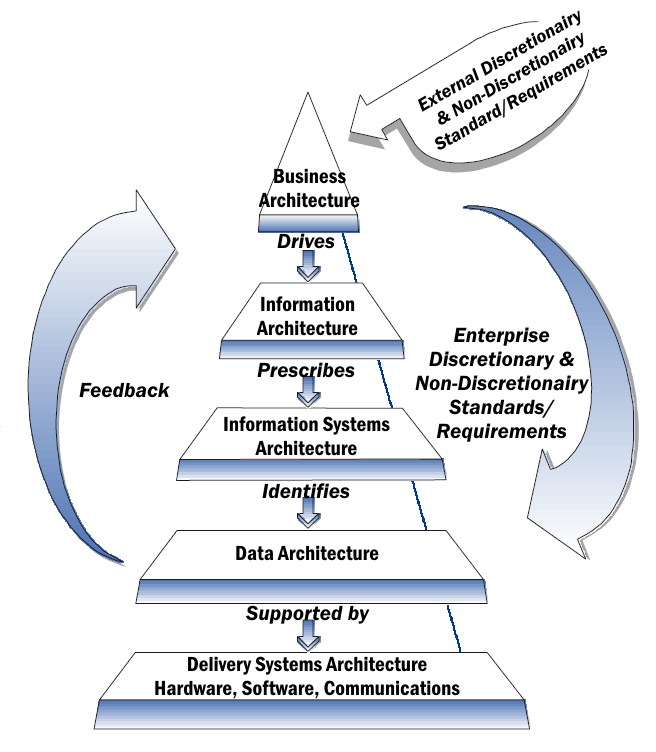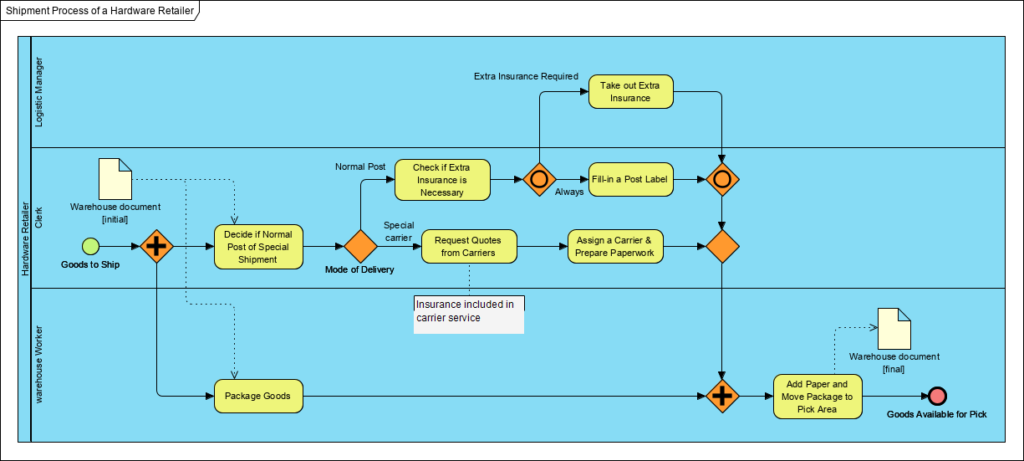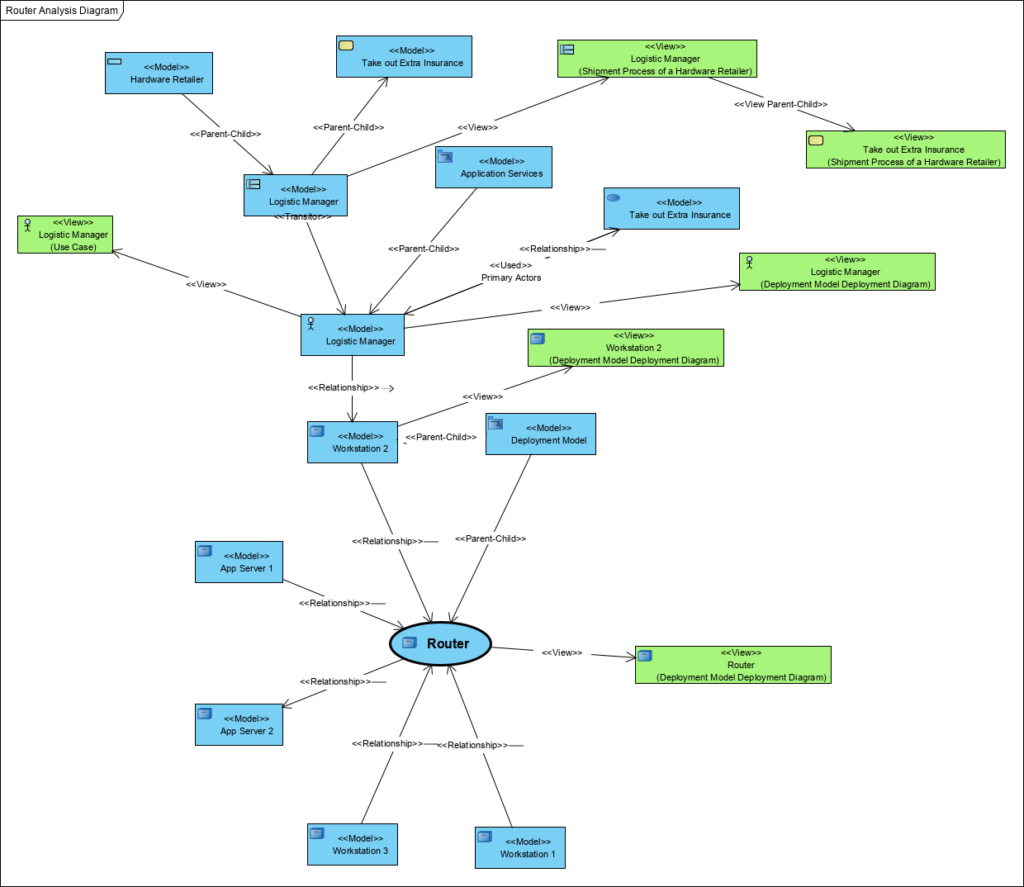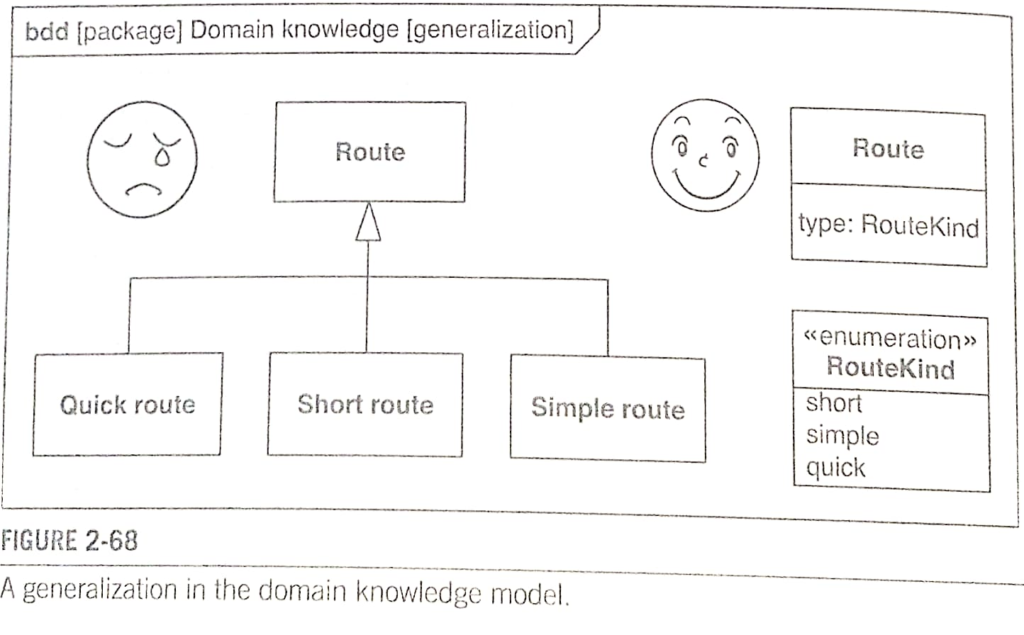September, 2020
now browsing by month
Business continuity management – how to model it

Business Continuity Management (BCM) projects are really difficult . The main reason is the system complexity: many documents, many tasks, many processes, many associations between all of them. Each task connected to one or more business application. Each documents stored in different database. The applications are integrated. Everything works like one chain ? but one broken link can crash everything .
How we can managing risks? We can create Business Architecture model and expand this up to Enterprise Architecture, as a model for trace process, data, IT system and infrastructure.

How we prepare Enterprise Architecture model? Simple version: prepare business model :

Transform this to use case model (application services) :

Build matrix for trace mapping control :

Trace (map) use case to software components :

We have completed model, we can do impact analysis, e.g. what happens and where, when the Ruter go down:

Sometimes we ask: what does the possibility of carrying out the Package Goods task depend on?

How can we do this and what tools do we need? Welcome in my courses, hire me …
References
Types instead of inheritance

Many time we can see requirement written as a “class diagram for project”. What “class diagram” mean? We can use UML class diagram for: architecture model, notions model, sometimes other. Which type of model do you need? Class diagram is a tool. When we say model, we have to provided context: model of what?

We use inheritance in models of notions (for building taxonomies), never in architecture.. In architecture models we use types. In 2015 OMG published UML v.2.5. Inheritance was removed from UML . Why? Welcome in my courses?
References
Systems analysis and design

Many time we heard about agile in software development. Many times authors wrote that agile provide us to fast and cheapest solutions. It is true but not all the times. Chaos Report (see Standish Group) show us, that is not true all the times.
Few comments…
Generally small projects are not a (big) problem..

Waterfall vs. agile: first one method consume many more time than second one, but we have no time to ‘big analysis’. Second one mean ‘working too fast’, and effect is more prototyping mean cost increasing… many time mean: cancel project before finish caused by budget:

A waterfall is not a solution, but agile is not a good remedy for it. A common problem in software design is system size and complexity:

How to improve quality and chance to succeed software project? We need really good person to business analysis role and only one. More than one person in a first stage, mean more problem with merging parts to one completed and unambiguous requirements document :

Disciplined agile, what is it? Using models in agile, why and for what? Modern system analysis and design is not a waterfall and not a agile style? It is science method used for software engineering . Discover the MDA and patterns as a wand for your success in software projects. See the system as a architecture .
More about general systems and SysML notation coming soon ?
Try my courses for improve your skills and your teammates, hire me as a gifted person in your project.
